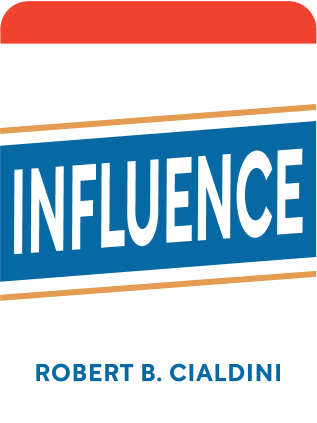

This article is an excerpt from the Shortform summary of "Influence" by Robert B. Cialdini. Shortform has the world's best summaries of books you should be reading.
Like this article? Sign up for a free trial here .
Do you ever see people doing something and think you should join in? Have you ever gone along with something a group wanted to do only to regret it? Maybe you realize, “I should think for myself” only after it’s too late. If you want to avoid the fallacy of social proof, you need to think for yourself.
The Social Proof Principle is a theory stating that you decide what’s correct based on what other people think is correct. This isn’t always the best course of action and this principle can lead to manipulation. Think for yourself and avoid being persuaded to do something you don’t agree with.
Why Do We Imitate Others?
If lots of other people are doing something or thinking something, then it must be good and worthy of imitation. You might expect that you would think for yourself, but it doesn’t always work that way.
The motive, then, is clear for compliance practitioners. If they can convince you that lots of other people are doing something, they can make you do it too. So, why do we imitate others? Because it’s our natural instinct.
Think for Yourself: Pushing Back Against Social Proof
How can you push back against the social proof manipulations of compliance practitioners? Knowing the explanation for why do we imitate others, how can you overcome the overwhelming instinct to conform to group behavior?
Social proof acts like an autopilot: usually it steers us right, but it can land us in trouble if it’s being fed the wrong data. You need to recognize situations where your social proof instinct is being triggered based on manufactured or faulty evidence. Once you recognize that this is happening, you’ll know to think for yourself.
See Through the Fakery
There are “person-on-the-street” commercials and canned laughter in sitcoms that we know are manipulative strategies. But they still work. Why do we imitate others even when we know it’s fake? It bears repeating: compliance practitioners want to convince you that lots of people are behaving the way the manipulators want you to behave.
But ruses like fake “real people” or artificial laugh tracks are often comically transparent in their phoniness. So keep repeating, “think for myself.” (Shortform note: So are other “tells” like implausibly high statistics (“99 percent of dentists agree”) or, in online shopping, companies buying positive, fake user reviews on sites like Amazon and Yelp.) Treat any over-the-top praise from a “neutral” observer with skepticism. You have to think for yourself.
You should immediately pounce once you recognize an effort to deceive you with counterfeit social proof. For example, don’t purchase products that are sold via these unscrupulous “unrehearsed interview” techniques.
You can even go a step further and demand that the company in question fire the advertising agency that produced the ad and vow never to work with them. You’re sending the message: “I think for myself.” Blatantly calling out compliance practitioners like this and forcefully demonstrating that these tactics won’t work is the only way to get them to stop.
Re-Think Faulty Information
Not all Social Proof Principle errors are the result of deliberate manipulation meant to stop you from being able to think for yourself. Natural, genuine errors of judgment (like those made by the Kitty Genovese witnesses) can snowball into a group making a bad decision.
A lot of traffic accidents, for example, are caused by just a few drivers switching lanes. The drivers behind them start switching lanes too, thinking that those in front must have had a good reason for switching. Through social proof, this leads to a wave of sudden lane departures, which increases the likelihood of a collision. In a situation like this, you might remind yourself, “think for myself” but your conclusion still relies on what others are doing.
Look more closely at group behavior. Is there a reason to do something, beyond just the fact that everyone else is doing it? Don’t be like a pilot who flies by relying solely on her instruments. You also need to actually see the sky in front of you and think for yourself. Sometimes you do need to look critically at the world around you, take the time to assess situations, and apply your own individual judgment.

———End of Preview———
Like what you just read? Read the rest of the world's best summary of Robert B. Cialdini's "Influence" at Shortform .
Here's what you'll find in our full Influence summary :
- How professional manipulators use your psychology against you
- The six key biases you need to be aware of
- How learning your own biases will help you beat the con men around you






